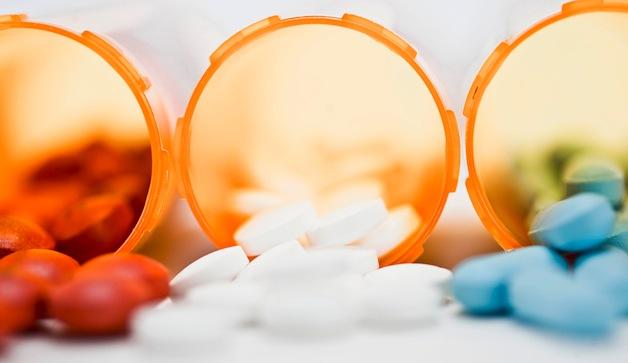Researchers Complete Trial Run for 3D Printed Medication–Including Dinosaur Shapes for Finicky Kids
 For all the multi-taskers out there who cut strategic corners to stay organized, for those who are glad to never leave the home or the computer, and for all the exhausted parents out there who have sick kids and haven’t brushed their hair or gotten out of pajamas or sweat pants in days, 3D printing is about to change the way you deal with many processes.
For all the multi-taskers out there who cut strategic corners to stay organized, for those who are glad to never leave the home or the computer, and for all the exhausted parents out there who have sick kids and haven’t brushed their hair or gotten out of pajamas or sweat pants in days, 3D printing is about to change the way you deal with many processes.
Let’s start though with the idea of no more long trips fighting traffic just to wait in an excruciatingly long line at pharmacies (and getting more germs while hanging with the flu-ridden population of the city) to pick up medication, whether for an acute situation or chronic.
It may seem a far-fetched concept today, but the fairly realistic promise and potential for tomorrow is that if you have a 3D printer on the desktop, that may be where you are picking up your prescriptions before too long. No muss and no fuss, except for equipment and printing. And given that you would be allowed your choice of materials, this could come in very handy when dealing with those aforementioned kids who barely want to eat a meal–much less drink medication or down a pill.
While the technology most likely will be available and tested in hospitals and medical offices first, researchers at University College London (UCL) are currently developing specialized tablets that look like they have the potential for not only great medical use, but commercial as well, offering users the ability to 3D print attractive shapes and flavors for kids.
 Displaying the typical benefits of 3D printing, this process would also allow for quality and efficiency in production, customization, and great affordability as the user or patient could print just one pill at a time if that was all that they needed at the time. This would improve how many patients purchase, receive, and deal with some pills that require splitting in two or cutting into fourths as they are produced in bulk and customization is not available to the individual dose.
Displaying the typical benefits of 3D printing, this process would also allow for quality and efficiency in production, customization, and great affordability as the user or patient could print just one pill at a time if that was all that they needed at the time. This would improve how many patients purchase, receive, and deal with some pills that require splitting in two or cutting into fourths as they are produced in bulk and customization is not available to the individual dose.
“3D printing is so cheap that potentially you could put a 3D printer into a hospital pharmacy and the doctor could print just a week’s worth of tablets with the right dose for a particular patient,” said Dr. Simon Gaisford, head of pharmaceutics at UCL.
The process would allow for a very positive and substantial impact on hospital economics, as eliminating bulk ordering would also eliminate a great deal of waste that goes on currently.
While many patients and individuals are used to receiving a bottle of pills when sick or in pain, often it’s not the most efficient and economical way of dispensing medication–most especially in the cases of transplant patients who are given extremely customized–and constantly adapted–doses of immunosuppressants.
This is an especially sensitive situation with children, and again, they often benefit from 3D printing, as we see often with prosthetics for kids, because digital design allows for constant customization and editing, and 3D printing is fast and affordable.
“Because a child is always growing, following transplantation the dose they need is constantly changing, literally week to week,” says Dr. Gaisford. “And that’s where the new technology’s ‘Mary Poppins’ factor could come into play.”
“Children don’t like taking medicine,” says Dr. Gaisford. ‘Now, in principle, we could ask a child, ‘What’s your favourite animal?’ And print the tablet in any shape and colour they like.”
The researchers were able to construct pills in different shapes and sizes, using the same type of plastic casing that is used in many other typical gel pacs these days, most commonly for detergents. Before being put into their casing, the soluble 3D printing material was allowed to soak up a fluorescent orange fluid in lieu of real medication for testing and monitoring purposes. This system would feasibly work very well for medications that arrive in liquid form, allowing for a reservoir of liquid medicine to be kept at the personal 3D printer, at the ready to be printed into the capsules, or ‘lengths,’ as the researchers refer to them.
“There’s an interesting discussion to be had about what this means for the future of medicines,” said Dr. Gaisford. “Could we have a printer in someone’s house, so a doctor could email them the prescription and they could print out the medicine themselves?”
With a successful trial behind them so far, just reported in the International Journal of Pharmaceutics, Dr. Gaisford projects this technology only being about five to ten years out from becoming a reality in the medical world. In the meantime, he and his team coordinated to form a company called FabRx, meant specifically to invest in the obvious value of their new way of making 3D printed drugs. We heard about FabRx and their 3D printing drug initiative last month, and the addition of children-specific shapes certainly broadens their appeal and potential market.
Discuss what you think the implications are in the future for the use of 3D printed drugs in hospitals and also at the home desktop in the Customizable 3D Printed Drugs forum thread over at 3DPB.com.
Subscribe to Our Email Newsletter
Stay up-to-date on all the latest news from the 3D printing industry and receive information and offers from third party vendors.
Print Services
You May Also Like
New Business: Temporary, Migratory, & Modular 3D Printed Architecture
If we look at potentially emerging 3D printing businesses, then architecture has not been fully explored. Yes, there is a lot of house 3D printing going on worldwide. From deployable...
3D Printing News Briefs, April 19, 2025: Material Extrusion Standard, Metal Powder, & More
In today’s 3D Printing News Briefs, we’re covering a proposed standard for material extrusion, before moving on to business and metal powder. We’ll end with a commercial store’s robotic 3D...
Japan Unveils World’s First 3D Printed Train Station
Japan is now home to what we believe is the world’s first train station built with 3D printing technology. Located in Arida City, just south of Osaka, the new Hatsushima...
restor3d Raises $38M to Expand 3D Printed Orthopedic Implants
Backed by $38 million in new funding, restor3d is pushing ahead with the launch of four personalized implant lines, set to roll out in 2025 and 2026. This latest venture...

























